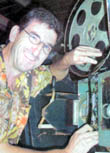|
|
This topic comprises 3 pages: 1 2 3
|
|
Author
|
Topic: Scope Aperture Plate question
|
|
|
|
|
|
|
|
|
|
|
John Hawkinson
Film God

Posts: 2273
From: Cambridge, MA, USA
Registered: Feb 2002
|
 posted 11-10-2004 10:12 PM
posted 11-10-2004 10:12 PM




You're probably best off just buying the correct aperture plate. You have a Simplex, right? The .650"x.650" plate is G-2515. What you probably want is the .650"x.780" plate (G-2414), which is about .040" under on each side, so it can be cut to your screen. I don't know if you can order a spot-on 690x825 plate pre-cut for Simplexes.
You're probably better off going through a Wolk reseller. Support your local dealer. Also, www.rsem.com has a very comprehensive web site listing pretty much everything (note that Simplex apertures are available manufactured from Wolk as well as Simplex), and is a reasonable choice.
You could also use your .650 square for practice. Get yourself a flat file (and maybe a stone) and a caliper and carefully go to town. If you don't have a caliper, definitely pick one up, they're incredibly useful. Harbor Freight sells bottom-of-the-barrel CEN-TECH digital calipers for $16. They're actually remarkably good, and a steal at that price.
--jhawk
| IP: Logged
|
|
|
|
|
|
|
|
|
|
|
|
|
|
Frank Angel
Film God

Posts: 5305
From: Brooklyn NY USA
Registered: Dec 1999
|
 posted 11-11-2004 01:19 AM
posted 11-11-2004 01:19 AM





Wow, you guys who can cut from one of those pinhole plates...you RULE. I HATE cutting plates when they are just undersized; I can't imagine how much of a pain cutting all that area would be from a pinhole plate.
Thing is, if you are cutting plates to correct anything like keystoning or doing a perspective curve, what you've got is an uneven cut. I don't see how calipers could help you. The only time using an instrument to measure the plate numbers would be if the projector was sitting directly in the center of the screen with no tilt or yawh (OK, I don't know what yawh is...it just sounds good).
I've got a standard file set with very fine teeth, or whatever you call the surface, and I used a grind wheel to file off the teeth on the side edge of the file. Most consumer hardware store files have side teeth that will nick the adjacent plate wall. Thing is, the files in this set happen to have a rounded shaft on the end which is used to attach a plastic handle. With the handle removed, the shaft fits perfectly into the blade jaws of a reciprocal saw. Next plate that I have to cut, I will try attaching the file to the saw. The saw will cause a rapid back and forth motion to the file, just what's needed. It should prove to be very useful in allowing a much more even control of the cut and certainly easier on the guy doing the cutting. We shall see.
| IP: Logged
|
|
|
|
William Hooper
Phenomenal Film Handler
Posts: 1879
From: Mobile, AL USA
Registered: Jun 99
|
 posted 11-11-2004 02:27 AM
posted 11-11-2004 02:27 AM





The SMPTE projection aperture assumes that the projector will be exactly perpendicular to the center of the screen. If it is slightly above or below, and/or to one side, you will get keystone. The keystone must be corrected by filing an undersized aperture plate for exactly that throw & screen.
We don't know your application. If this is a home or mobile setup & you don't intend to get rid of the keystone, then you can just put a vertically symmetrical plate in like Jayhawk is talking about.
Gordon is assuming you are going to correct the keystone, as in a regular theatre. You must get a plate with the opening too small, & file it out to the needs of the screen & angle.
Projectors are almost never dead on to the center of the screen, with no angle. They're usually above the center or the whole screen, & pointed down. This distorts the projected image. *Any* amount of angle distorts it.
When you get to extremities like this:
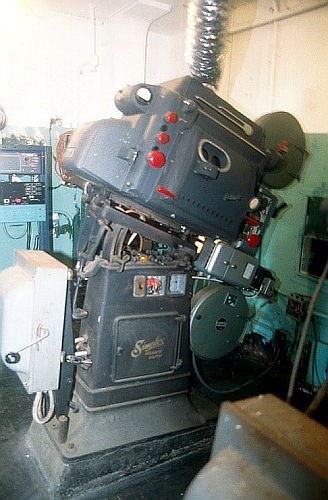
something which appears on the film like this:

will appear on the screen like this:
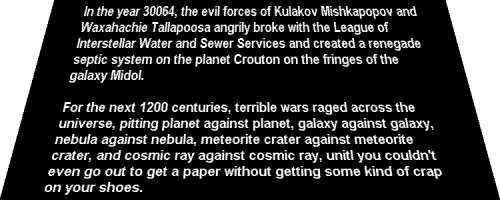
(Which, by the way, is the way ALL titles looked to kids sitting on the front row in a big house, due to foreshortening. It took me a long time to understand these people who were losing bladder control over the Star Wars Titles: they'd never sat in the front row in a big house. Lucas obviously had.)
So to get this all square again onscreen, an aperture plate is filed to the reverse of the keystone on that projector:
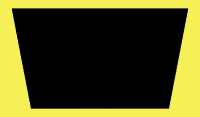
This blocks the image on the sides to form a rectangle again
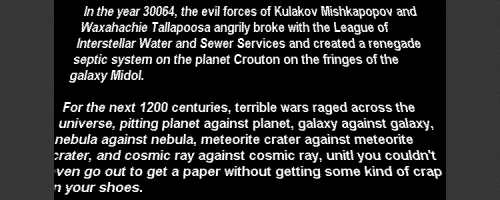
Those illustrations aren't to any particular scale; they're just to show how it works. In actuality, more goes on: screen curve, horizontal keystone from being to the left or right, bear in mind that the aperture plate for scope is *before* the anamorphic adapter which spreads the picture horizontally, etc.
You run a loop of RP-40 (MAKE me say PA-35!) on the projector. Then you put in a plate with an undersized hole, look at the picture, pull the plate, file it out where it's needed, stick it back in, repeat. Don't file too far!
There's a picture of an aperture plate at
http://www.widescreenmuseum.com/widescreen/lbx.htm
Brad's gripe about Strong not understanding & offering plates already cut to the zero line vertically is due to the fact that lens sizes are not continuous - you get the closest lens size that projects a picture to the vertical size of the screen, but since it may not be right on it, the picture must not be slightly smaller, but larger than the masking, & a bit is cropped vertically via the aperture plate.
I'm glad Frank has owned to disliking cutting aperture plates. Me, too. Some folks can just spit them out.
An aperture plate file, which has teeth only on one side has been mentioned. Hobby shops also sell sets of miniature files which include some with teeth on only one side.
| IP: Logged
|
|
|
|
All times are Central (GMT -6:00)
|
This topic comprises 3 pages: 1 2 3
|
Powered by Infopop Corporation
UBB.classicTM
6.3.1.2
The Film-Tech Forums are designed for various members related to the cinema industry to express their opinions, viewpoints and testimonials on various products, services and events based upon speculation, personal knowledge and factual information through use, therefore all views represented here allow no liability upon the publishers of this web site and the owners of said views assume no liability for any ill will resulting from these postings. The posts made here are for educational as well as entertainment purposes and as such anyone viewing this portion of the website must accept these views as statements of the author of that opinion
and agrees to release the authors from any and all liability.
|

 Home
Home
 Products
Products
 Store
Store
 Forum
Forum
 Warehouse
Warehouse
 Contact Us
Contact Us




 Printer-friendly view of this topic
Printer-friendly view of this topic
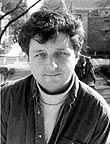








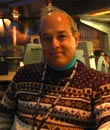
![[Frown]](frown.gif)


